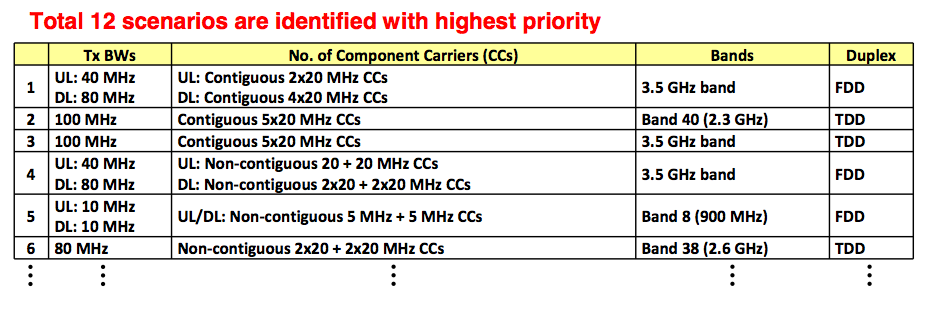Clearwire Makes its LTE Advanced Plans Official
by Brian Klug on August 3, 2011 7:58 PM ESTWe've suspected for a long time now that this was inevitable, but Clearwire today announced its official intent to build an "LTE Advanced-ready" network alongside its existing WiMAX network. The move isn't particularly surprising, considering the growing momentum behind the 3GPP camp's competing 4G standard, LTE. Verizon Wireless, AT&T, and LightSquared all have thrown their their might behind LTE in the US, while WiMAX has seen comparatively little momentum beyond an initial growth spurt.
Moreover, Clearwire has been running 20 MHz FDD LTE trials in Phoenix, AZ for some time now. For comparison, Verizon Wireless is running 10 MHz FDD LTE on its 700 MHz band and AT&T will use both 5 MHz and 10 MHz FDD LTE depending on the band (700 MHz and 1700/2100 AWS, respectively).
In today's announcement however, Clearwire indicated that it will use TDD-LTE (Time Division Duplexing, rather than Frequency Division Duplexing, or FDD) on an unnamed "utra-high" amount of spectrum. In all likelihood, that probably means that 20 MHz TDD LTE (3GPP Rel. 8) is in the works initially, followed by a 3GPP Rel.10 "LTE-Advanced" rollout with some number of 20 MHz channels all aggregated (a core LTE-Advanced feature).
The 3GPP camp even has a potential 2x20 + 2x20 TDD carrier aggregation scenario which is prioritized as shown above. This is more than an adequate fit for Clearwire's current spectrum holdings, and could enable the carrier to run more than bandwidths of up to 100 MHz through an aggregation strategy with LTE-Advanced.
One thing is for certain - Clearwire does have a considerable amount of spectrum in its 2.5 GHz band to deploy into, with 194 MHz in the Phoenix market alone as shown above. The upgrade will also have to happen alongside a live WiMAX network which Clearwire will continue running indefinitely in the same 2.5 GHz band.
Source: Clearwire, Clearwire Tech Trials












7 Comments
View All Comments
DanNeely - Wednesday, August 3, 2011 - link
Does anyone know how well this spectrum will penetrate? The 2.5ghz used for clearwire's wimax and similar frequencies used for LTE in parts of Europe do a much poorer job of penetrating buildings than the ~800 and 1900mhz bands used for existing 2/3g services and VZW's LTE network. I'm wondering if 3.5ghz is going to have similar issues.Plugers - Wednesday, August 3, 2011 - link
It will.Higher freq = less penetration.
Hrel - Wednesday, August 3, 2011 - link
2.5GhzBrian Klug - Wednesday, August 3, 2011 - link
Higher frequencies definitely have less than desirable propagation characteristics. 3.5 GHz is going to have similar issues.-Brian
0ldman79 - Wednesday, August 3, 2011 - link
These guys are right on target. 3.65GHz has a lightly licensed bit that us wireless ISP's are allowed to use.2.4GHz is so/so at penetrating objects, working around non line of sight. 5GHz is pretty much line of sight only. 3.65GHz is more like 5GHz than it is 2.4GHz. The equalizer that makes it useful is we are allowed more power on 3.65GHz.
DanNeely - Thursday, August 4, 2011 - link
More power is only really an option for fixed customer receivers, not mobile ones that are limited to battery power.tech4tac - Wednesday, August 3, 2011 - link
It's great to hear about the growing acceptance of LTE and LTE Advanced because of the implications: better and cheaper parts for service providers and handset makers through mass production which should also trickle down to consumers via lower cost handsets. However, investors and customers should stay CLEAR or Clearwire/Clear.Clearwire Corporation has been burning though cash since Clear's inception, building a brand new WiMAX network. They no longer have adequate cash reserves to complete a LTE transition and the stock is bordering junk status (CLWR 2.26). They could sale spectrum, but alas, that would leave them uncompetitive and Sprint likely wants to keep that spectrum in place in case they sale Clear... I have doubts about them surviving through next year. Don't believe the hype, this cash strapped company is looking for foolish investors and customers who will both be sorely disappointed. If history is any sign, they'll over-promise connection speeds, throttle everyone who wants to actually use their service like crazy, sell overpriced equipment, provide horrible customer support, and use underhanded business practices to sucker money out of anyone they can. If you sign up with them now, or even when LTE is rolled out, you'll just be left with overprice equipment on an under-performing network that will be useless once the company goes bankrupt.